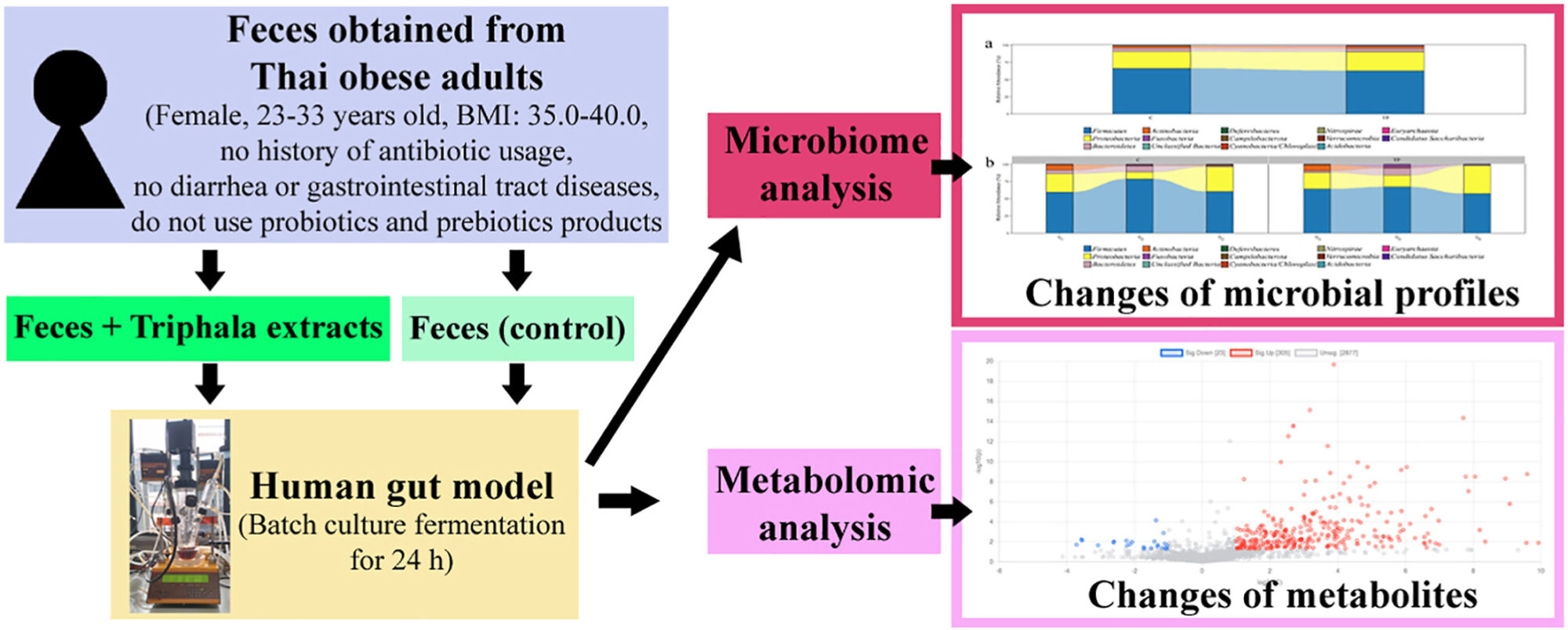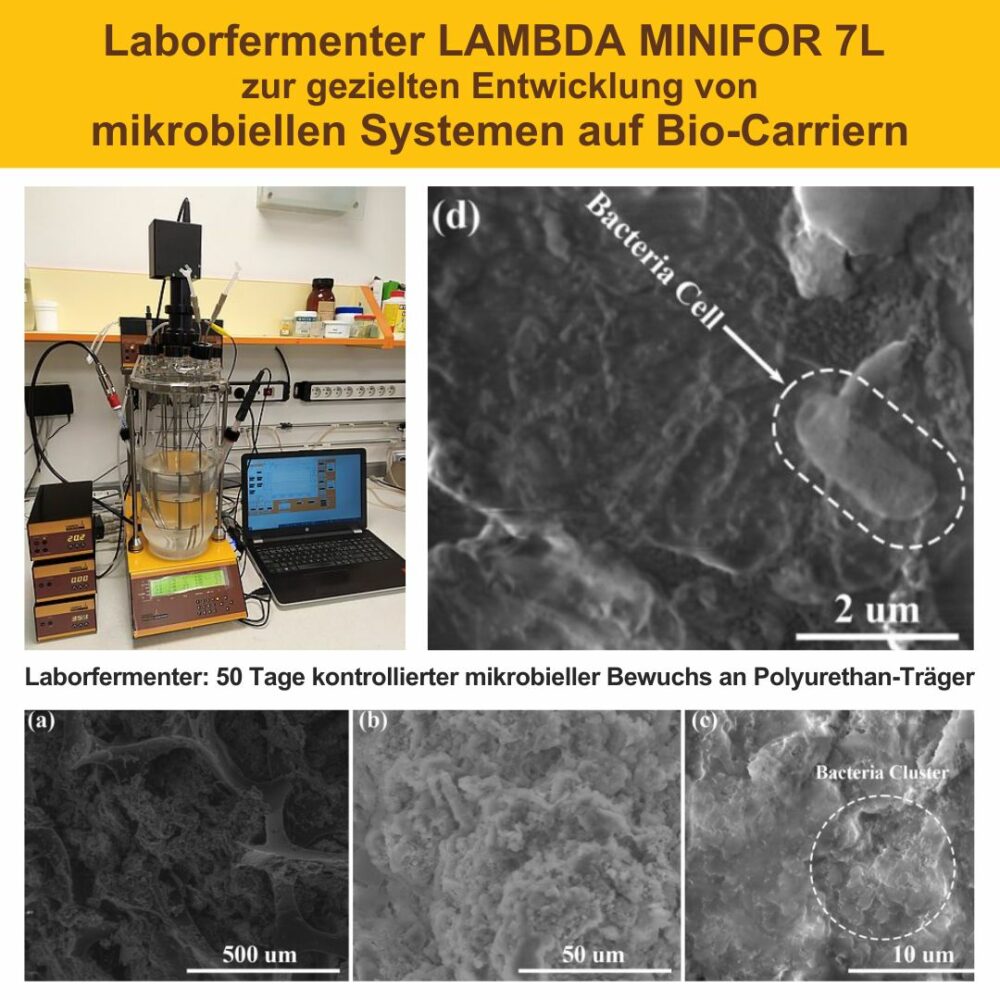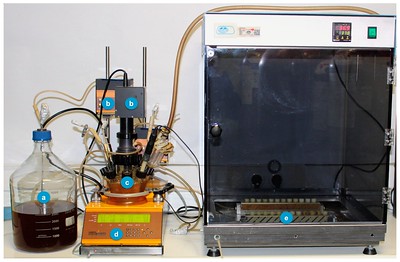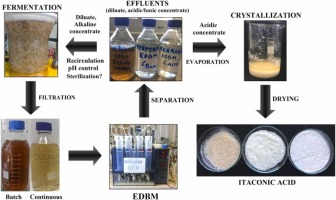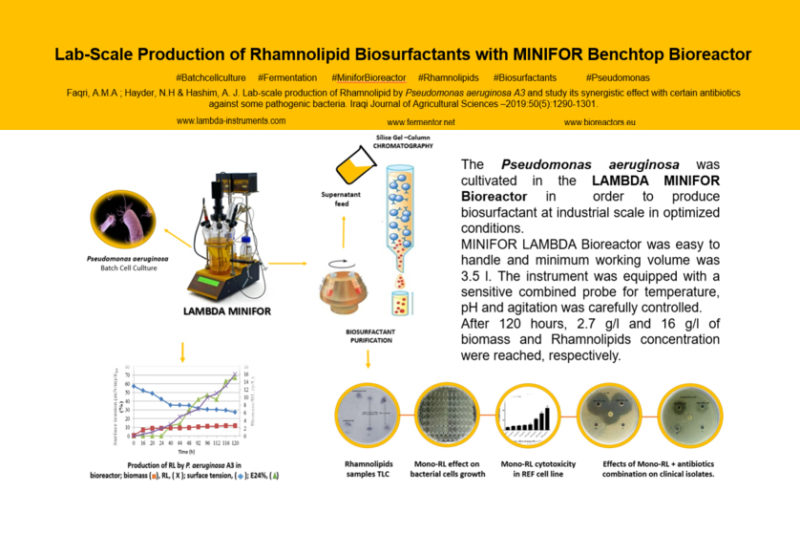Referenzen für LAMBDA MINIFOR Laborfermenter und Bioreaktorsysteme
Die neusten wissenschaftlichen Veröffentlichungen als Referenzen für die LAMBDA MINIFOR Laborfermenter und Bioreaktorsysteme finden Sie hier unten verlinkt.
Weitere Referenzen sind auf www.lambda-instruments.com/de/bioreaktor-laborfermenter/#publications gelistet.
Wir von LAMBDA Laboratory Instruments freuen uns immer, Ihre Publikationen zu erhalten, bei denen LAMBDA MINIFOR Sie in Ihren Projekten und Forschungsarbeiten im Labor unterstützt.
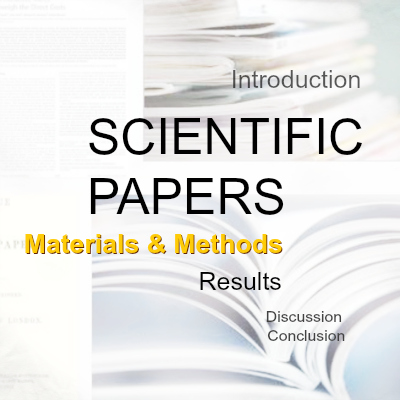
Die besten Referenzen für Laborfermenter und Bioreaktorsysteme sind erfolgreiche Anwendungen.
2024: Referenzen Laborfermenter und Bioreaktorsysteme
Simultane Verzuckerung und Fermentation (SSF): Der Bioreaktor LAMBDA MINIFOR wurde sowohl für die Fermentation von vorbehandelter fester Biomasse (10 %) in Gegenwart von Cellulase, β-Glucosidase und beimpft mit Lactobacillus rhamnosus (1.7 L, 37 °C, pH=5.5, 72 h) als auch für die anschliessende Fermentation von Hydrolysaten mit Bacillus megaterium (1.7 L, 35 °C, 48 h) verwendet.
Senila, L., Kovacs, E., Resz, M. A., Senila, M., Becze, A., & Roman, C. (2024). Life Cycle Assessment (LCA) of Bioplastics Production from Lignocellulosic Waste (Study Case: PLA and PHB). Polymers 2024, 16, 3330.
https://doi.org/10.3390/polym16233330
Stichwörter: Ökobilanz, Biokunststoffe, Obstgartenabfälle, L-Polymilchsäure, Poly(3-hydroxybutyrat)
Biologischer Abbau: Behandlung mariner Proben unter Zusatz von „Diesel-B5“ (10 %, 15 %, 20 %) als C-Quelle in belüfteten und gerührten LAMBDA MINIFOR Bioreaktoren (Pseudomonas sp.; pH 6.5; Inkubationstemperaturen 25 °C, 35 °C und 45 °C).
Peña Ventura, J. C. (2024). Determinación del ratio de biodegradación de hidrocarburos totales de petróleo empleando Pseudomonas sp. en agua de mar contaminada con diésel-B5. Universidad Nacional de Trujillo, Unidad de Postgrado en Ingeniería Química, Tesis de maestro en ingeniería química ambiental.
URI: https://hdl.handle.net/20.500.14414/22166
Stichworte: Biologischer Abbau, Kohlenwasserstoffe, Erdöl, Diesel-B5, Bilge.
Alkoholische Fermentationen wurden unter Mikrovinifikationsbedingungen und in einem LAMBDA MINIFOR Bioreaktor mit kontrollierten Parametern (T = 20 °C, Rührfrequenz = 2 Hz) und Standardbedingungen (T = 12–14 °C) getestet.
Filimon, G. (2024). Monitorizarea fermentaţiei alcoolice a musturilor obţinute din soiuri de struguri rizogene. Universitatea Tehnică a Moldovei. Technical Scientific Conference of Undergraduate, Master and PhD Students: Chişinău, 27-29 martie 2024. Vol. 2
URI: http://repository.utm.md/handle/5014/28059
Schlüsselwörter: rhizogene Sorten, alkoholische Gärung, phenolische Verbindungen, Pinking
Anaerobe Batch-Kultivierung von C. butyricum im zuvor mit Argon gespülten Fermenter LAMBDA MINIFOR 3L: pH 5.6 (kontrolliert mit 1 M NaOH), 37 °C und 6000 rpm; Wasserverdrängungsmethode zur Messung der Gasproduktion, Überwachung des verdrängten Wasservolumens per Kamera und Flüssigkeits- und Gasprobenentnahme in regelmässigen Abständen.
Pištěková, H., Dusankova, M., Sopik, T., Klaban, J., Dostalkova, J., Moučka, R., & Sedlarik, V. Optimization of the Dark Fermentation Technique for Hydrogen Production Through Supplementation with Ascorbic Acid And/Or L-Cysteine by Clostridium Butyricum Ccdbc 11. Or L-Cysteine by Clostridium Butyricum Ccdbc, 11.
https://dx.doi.org/10.2139/ssrn.4973469
Schlüsselwörter: Biowasserstoffproduktion, Dunkelfermentation, Ascorbinsäure, L-Cystein, Clostridium butyricum
Die Mischkultur wurde in die Reaktionskammer des Bioreaktors LAMBDA MINIFOR inokuliert und bei 37 °C unter anaeroben Bedingungen kultiviert.
Khan, S. N., Ribeiro‐Vidal, H., Virto, L., Bravo, E., Nuevo, P., Koldsland, O. C., Hjortsjö, C. & Sanz, M. (2024). The Decontamination Effect of an Oscillating Chitosan Brush Compared With an Ultrasonic PEEK‐Tip: An In Vitro Study Using a Dynamic Biofilm Model. Clinical Oral Implants Research.
https://doi.org/10.1111/clr.14360
Stichwörter: anatomisches Modell, in vitro, mechanische Dekontamination, Multispezies-Biofilm, Periimplantitis
Die Batch-Fermentation von Dattelpalmensirup mit der Kokultur S. cerevisiae und P. stipitis ATCC 58785 wurde im LAMBDA MINIFOR 1L Advanced Kit Laborfermenter durchgeführt.
Shalsh, F. J., Gatte, E. H., Alsultan, I. I., Tariq, F. Z., Jassim, S. M., Saleh, M. T., & Alrazzaq, N. A. (2024). Bioplastic Compounds of Succinic Acid from Agriculture Waste; Date Palm Syrup And Date Palm Fronds. Nepal Journal of Biotechnology, 12(1), 32-39.
https://doi.org/10.54796/njb.v12i1.310
Stichworte: Dattelpalme, Palmenfront, Biokunststoff, GC
In vitro-Entwicklung eines dynamischen Multispezies-Biofilmmodells auf Implantatoberflächen: Planktonisches Wachstum aus einem Gemisch aus 6 verschiedenen Bakterienstämmen im LAMBDA MINIFOR Bioreaktor (12 h), gefolgt von einer kontinuierlichen Kultur (30 ml/h) durch 2 Robbins-Geräte, die die sterilen Implantate enthalten (37 °C, anaerob, 72 h).
Khan, S. (2024). Efficacy of Mechanical Decontamination Strategies in the Treatment of Peri-implantitis. Doctoral thesis, University of Oslo.
URI: https://hdl.handle.net/10852/111365 (2024 August 07)
Stichworte: CADCAM, Zahnimplantate, mechanische Dekontamination, Periimplantitis
In vitro dynamic multispecies biofilm model: During the entire incubation process (biofilms growing on implant surfaces), the LAMBDA MINIFOR bioreactor maintains the culture medium at 37 °C, pH 7.2 and an anaerobic atmosphere (10% H2, 10% CO2 and N2 balance).
Bravo, E., Arce, M., Ribeiro-Vidal, H., Herrera, D., & Sanz, M. (2024). The Impact of Candida albicans in the Development, Kinetics, Structure, and Cell Viability of Biofilms on Implant Surfaces—An In Vitro Study with a Validated Multispecies Biofilm Model. International Journal of Molecular Sciences, 25(6), 3277.
https://doi.org/10.3390/ijms25063277
Schlüsselwörter: Periimplantitis, oraler Biofilm, Candida albicans, Rasterelektronenmikroskopie, konfokale Laser-Scanning-Mikroskopie, quantitative Polymerase-Kettenreaktion
Submerser Batch Fermentationen (Konsortien) sowie Fed-Batch-Fermentationen (L. coryniformis) im LAMBDA MINIFOR Bioreaktor und SIAM-Software: 72 h, Endarbeitsvolumen = 200 ml, T = 37 ± 0.5 °C, Mischung 0.5 Hz, CO2 Sparging 0.04 L/min, pH 6.5 ± 0.5 unter Verwendung von 1 M NaOH und 1 M H2SO4 zur automatischen pH-Einstellung; Probenahme in regelmässigen Abständen.
Buljubašić, E., Bambace, M. F., Christensen, M. H. L., Ng, K. S., Huertas‐Díaz, L., Sundekilde, U., Marietou, A. & Schwab, C. (2024). Novel Lactobacillaceae strains and consortia to produce propionate‐containing fermentates as biopreservatives. Microbial Biotechnology, 17(2), e14392.
https://doi.org/10.1111/1751-7915.14392
Schlüsselwörter: Biokonservierungsmittel, propionathaltige Fermentate, mikrobielle Konsortien, kurzkettige Carbonsäuren, SCCA, Lacticaseibacillus rhamnosus, Limosilactobacillus reuteri, Loigolactobacillus coryniformis, Fructose, Desoxyhexosen, Bioprozess, Salmonella enterica
Das für das Wachstum von Biofilmen auf Implantatoberflächen validierte dynamische In-vitro-Multispezies-Biofilmmodell verwendet einen LAMBDA MINIFOR Bioreaktor, der die stabilen Bedingungen des proteinangereicherten BHI-Mediums hält: 37 °C, pH 7.2 und eine anaerobe Atmosphäre durch direktes Pumpen des Gasgemisches (10 % H2, 10 % CO2 und N2 Füllgas), wobei der Druck während des gesamten Inkubationsprozesses konstant bleibt.
Bravo, E., Arce, M., Ribeiro-Vidal, H., Herrera, D., & Sanz, M. (2024). The Impact of Candida albicans in the Development, Kinetics, Structure, and Cell Viability of Biofilms on Implant Surfaces. An In Vitro Study with a Validated Multispecies Biofilm Model.
https://doi.org/10.20944/preprints202402.1137.v1
Schlüsselwörter: Periimplantitis, oraler Biofilm, Candida albicans, Rasterelektronenmikroskopie, konfokale Laser-Rastermikroskopie, quantitative Polymerasekettenreaktion
Untersuchung von Nachernteverlusten von Früchten und Gemüse während der Lagerung unter kontrollierter Atmosphäre aufgrund der geringen O2-Belastung: 400 ml isolierte Tomatenzellen wurden in einem LAMBDA MINIFOR Bioreaktor (20 °C, pH 5.8) begast (10 L/h), um unterschiedliche O2-Konzentrationen (21 kPa, 5 kPa und 0 kPa) zu erreichen.
Mahomud, M. S., Islam, M., & Roy, J. (2024). Effect of low oxygen stress on the metabolic responses of tomato fruit cells. Heliyon, e24566.
https://doi.org/10.1016/j.heliyon.2024.e24566
Schlüsselwörter: Tomatenfrucht, Zellkultur, hypoxischer Stress, anoxischer Stress, Metabolom
Simuliertes menschliches Dickdarmmodell LAMBDA MINIFOR mit Basalnährmedium (37 °C, pH 6.8) und Kotaufschlämmungen
Pusuntisumpun, N., Tunsagool, P., Nitisinprasert, S., & Nakphaichit, M. (2024). Impacts of combining Limosilactobacillus reuteri KUB‐AC5 and Limosilactobacillus fermentum KUB‐D18 on overweight gut microbiota using a simulated human colon model. International Journal of Food Science & Technology.
https://doi.org/10.1111/ijfs.16941
Schlüsselwörter: Modulation der Darmmikrobiota, fettreiche Ernährung, Metabolomanalyse, Metagenomanalyse, potenzielle Probiotika, Übergewicht
2023: Referenzen Laborfermenter und Bioreaktorsysteme
Kontinuierliche Itaconsäure (IA) Fermentationen mit A. terreus spp.: LAMBDA MINIFOR 3L autoklavierbarer Bench-Top Laborfermenter (Arbeitsvolumen 1.8 Liter; 4 Tage Batch und anschliessend Verdünnungsrate 0.007 h-1; 33 °C; kontrolliert niedriger pH-Wert; Belüftung eine Woche 1.5 vvm Luft, dann 0.2 vvm O2) mit Septum für sterile Probenahmen und LAMBDA FiSH-TAIL (3.0 s-1) für sanftes und effizientes Mischen zur optimalen Sauerstoffanreicherung und Gasaustausch ohne Luftflutung als vorteilhafte Eigenschaften für filamentöse Mikroorganismen, um Klumpenwachstum als effizienteste Morphologie für die IA-Produktion zu erreichen.
Hülberné Beyer, É. A., Nemestóthy, N., & Bélafiné Bakó, K. (2023). Case Study of Continuous Itaconic Acid Fermentation by Aspergillus Terreus in a Bench-Scale Bioreactor. Hungarian Journal of Industry and Chemistry, 51(2), 57-63.
https://doi.org/10.33927/hjic-2023-19
Fotos der Morphologie im zeitlichen Verlauf der Fermentation: Abb. 1 auf https://hjic.mk.uni-pannon.hu/index.php/hjic/article/view/1214/1092 (2024 Feb. 08)
Schlüsselwörter: Bipolare Membranelektrodialyse, Klumpenmorphologie, integriertes System, Sauerstoffaufnahmerate
Gleichzeitige Verzuckerung (enzymatische Hydrolyse mit Cellulase und β-Glucosidase) und Fermentation (Lacticaseibacillus rhamnosus) von vorbehandelter delignifizierter Lignocellulose-Pflaumenbiomasse zu Milchsäure in einem LAMBDA MINIFOR Advanced Kit Bioreaktor (1.7 Liter; 37 °C/44 °C; pH 5.5/6.5) ; 72 h.)
Senila, L., Cadar, O., Kovacs, E., Gal, E., Dan, M., Stupar, Z., Simedru, D., Senila, M. & Roman, C. (2023). L-Poly(lactic acid) Production by Microwave Irradiation of Lactic Acid Obtained from Lignocellulosic Wastes. Int. J. Mol. Sci. 2023, 24, 9817.
https://doi.org/10.3390/ijms24129817
Schlüsselwörter: L-Polymilchsäure, erneuerbare Biomasse, gleichzeitige Verzuckerung und Fermentation, Milchsäure
Bewertung der Lebensfähigkeit und der maximalen spezifischen Wachstumsrate von Bacillus licheniformis in einem LAMBDA MINIFOR 7L Laborbioreaktor (2 Liter Arbeitsvolumen, 37 °C, pH 6.5, 200 U/min, kontrollierter Sauerstoff, submerse Batch-Fermentation (SMF), Zugabe von sterilisiertem Antischaummittel 204 (Sigma-Aldrich))
Dumitru, M. & Ciurescu, G. (2023). Optimization of the fermentation conditions and survival of Bacillus licheniformis as freeze-dried powder for animal probiotic applications. Scientific Papers. Series D. Animal Science. Vol. LXVI, No. 2, 2023; ISSN 2285-5750; ISSN CD-ROM 2285-5769; ISSN Online 2393-2260; ISSN-L 2285-5750.
https://www.animalsciencejournal.usamv.ro/pdf/2023/issue_2/Art10.pdf (2024 Jan. 02)
Schlüsselwörter: Futtermittel, Bacillus, Bioreaktor, Gefriertrocknung, Probiotika
Dynamisches In-vitro-Multispezies-Biofilmmodell mit LAMBDA MINIFOR zur Inokulation und zum Wachstum von Bakterien (Streptococcus oralis, Veillonella parvula, Actinomyces naeslundii, Fusobacterium nucleatum, Aggregatibacter actinomycetemcomitans, Porphyromonas gingivalis) in anaerober Atmosphäre [10 % H2, 10 % CO2, Rest N2]) bei 37 °C und pH 7.2, gefolgt von der Übertragung auf ein Robbins-Gerät mit Dental-Hybrid-Titan-Implantaten (HS) mit unterschiedlicher Oberflächenbeschaffenheit zur Biofilmbildung.
Bravo, E., Serrano, B., Ribeiro-Vidal, H., Virto, L., Sánchez, I.S., Herrera, D. & Sanz, M. (2023). Biofilm formation on dental implants with a hybrid surface microtopography: An in vitro study in a validated multispecies dynamic biofilm model. John Wiley & Sons, Ltd., 0905-7161. Clinical Oral Implants Research, Volume 34, Issue 5, May 2023 Pages i-iii, 405-541.
https://doi.org/10.1111/clr.14054
Schlüsselwörter: bakterieller Biofilm, Hybrid-Zahnimplantat, Implantatoberfläche, in vitro, periimplantäre Erkrankungen, qPCR
Bacillus megaterium Fermentation im Bioreaktor LAMBDA MINIFOR (1.7 Liter)
Senila, L., Gál, E., Kovacs, E., Cadar, O., Dan, M., Senila, M. & Roman, C. (2023). Poly(3-hydroxybutyrate) Production from Lignocellulosic Wastes Using Bacillus megaterium ATCC 14581. Polymers. 2023, 15, 4488.
https://doi.org/10.3390/polym15234488
Schlüsselwörter: Polyhydroxybuttersäure; Mikrowellenbestrahlung; lignozellulosehaltige Abfälle; Bacillus megaterium ATCC 14581
Optimierung der Lipase-katalysierten Hydrolyse von Pflanzenölen: Steuerung und Überwachung durch einen LAMBDA MINIFOR Bioreaktor (pH-Wert, Temperatur, Reaktionszeit, Enzymbeladung und Öl/Wasser-Verhältnis der Reaktionsmischung
Faillace, E., Brunini-Bronzini de Caraffa, V., Mariani, M., Berti, L., Maury, J. & Vincenti, S. (2023). Optimizing the First Step of the Biocatalytic Process for Green Leaf Volatiles Production: Lipase-Catalyzed Hydrolysis of Three Vegetable Oils. International Journal of Molecular Sciences. 2023; 24(15):12274.
https://doi.org/10.3390/ijms241512274
Schlüsselwörter: Lipase, Hydrolyse, Sonnenblumenöl, Hanföl, Leinsamenöl, Antwortoberflächenmethodik
Simulation eines In-vitro-Darmmodells mit LAMBDA MINIFOR 0.3L: Anaerobe Batch Fermentationen (37 °C, pH 6.8–6.9, 24 h) menschlicher Fäkalienaufschlämmung (1 % (v/v)) zur Bewertung der Wirkung von Triphala Extrakte (1 mg/ml) Co-Fermentation auf Mikrobiota und Stoffwechselveränderungen.
Kwandee, P., Somnuk, S., Wanikorn, B., Nakphaichit, M. & Tunsagool, P. (2023). Efficacy of Triphala extracts on the changes of obese fecal microbiome and metabolome in the human gut model. Journal of Traditional and Complementary Medicine, Volume 13, Issue 2, 2023, Pages 207-217, ISSN 2225-4110,
https://doi.org/10.1016/j.jtcme.2023.02.011
Schlüsselwörter der Veröffentlichungen:
T. bellirica, T. chebula, P. emblic, Feces, Metabolom, Mikrobiom, Fettleibigkeit, Triphala-Extrakte
Mehr zum Thema: www.lambda-instruments.com/de/presse/detail/lambda-minifor-fermenter-for-simulating-the-human-microbial-ecosystem-shme/
Das künstliche SHIME in-vitro Darmmodell mit LAMBDA MINIFOR 0.3L Fermentern zur Untersuchung des mikrobiellen Ökosystems des Darms
Das Video www.youtube.com/watch?v=hXcpa0bXu6Q zeigt Assoc. Prof. Massalin Nakphaichit vor den SHIME-Reaktoren in der Abteilung für Biotechnologie der Fakultät für Agrarindustrie an der Kasetsart-Universität (KU, Thailand).
 LAMBDA MINIFOR 7L Bioreaktor: Entwicklung des hochdichten mikrobiellen Ökosystems RODMs für den effizienten Abbau von hochkonzentrierten Aromaten.
LAMBDA MINIFOR 7L Bioreaktor: Entwicklung des hochdichten mikrobiellen Ökosystems RODMs für den effizienten Abbau von hochkonzentrierten Aromaten.
Ahmad, M., Yousaf, M., Han, J.-C., Huang, Y., Zhou, Y. & Tang, Z. (2023). Development of Biocatalytic Microbial Ecosystem (FPUS@RODMs@In-PAOREs) for Rapid and Sustainable Degradation of Various Refractory Organics. Journal of Hazardous Materials, 2023, 131514, ISSN 0304-3894, https://doi.org/10.1016/j.jhazmat.2023.131514
Schlüsselwörter der Publikation: Industrielles Abwasser; Refraktäre organische Stoffe; Biokatalyse; Bioträger; Enzymatische Katalyse
Mehr zum Thema: www.lambda-instruments.com/de/presse/detail/creating-a-microbial-ecosystem-in-the-bio-carrier-harnessing-the-power-of-the-lambda-minifor-biorea/
Hybridomzellen (Inokulation 4.0 × 10E5 Zellen/ml (90 % Lebendanteil)) im Fed-Batch-Modus in einem LAMBDA MINIFOR Bioreaktor
Llamo, A., Hernández, D., García, C., González, M., Ferro, W., Garay, H., Diago, D., Fajardo, A., Espinosa, L., Padilla, S., Gómez, L., Chinea, G. & and Valdés, R. (2023). Gamma-Immunoglobulin Response Characterization, in COVID-19 Convalescent Patients, Against the Spike Protein S2 Subunit with Eight Linear Peptides for Monoclonal Antibody Generation. BioProcess J, 2023; 22.
https://doi.org/10.12665/J22OA.Llamo
Schlüsselwörter: SARS-CoV-2, Spike-Protein S2-Untereinheit, IgG, Hybridomzellen, Fed-Batch
LAMBDA MINIFOR 0.4L Bioreaktor für Mediumkonditionierung (37 °C, pH 7.2, konstante anaerobe Bedingungen (10% H2, 10% CO2, N2)) mit Wägemodul und Mediumpumpen (30 ml/h) in einem dynamischen in vitro Biofilmmodell zur Nachahmung der Mundhöhlenumgebung
Alonso-Español, A., Bravo, E., Ribeiro-Vidal, H., Virto, L., Herrera, D., Alonso, B. & Sanz, M. (2023). The Antimicrobial Activity of Curcumin and Xanthohumol on Bacterial Biofilms Developed over Dental Implant Surfaces. Int. J. Mol. Sci. 2023, 24, 2335.
https://doi.org/10.3390/ijms24032335
Schlüsselwörter: Curcumin; Xanthohumol; Periimplantitis; orale Biofilme; Rasterelektronenmikroskopie; konfokale Lasermikroskopie; Polymerasekettenreaktion; in vitro; antibakteriell; Antibiofilm
© 2023 by the authors (see above). This picture is an open access picture distributed under the terms and conditions of the Creative Commons Attribution (CC BY)
Pasteurisierung von Milch bei 70 °C für 30 min in LAMBDA MINIFOR Fermentern
/
LAMBDA MINIFOR Fermenter: Temperatureffekttests auf das Wachstum der Hefe Kazachstania unispora (initial ~10E6 CFU/ml) in Milch (800 ml, ~6 % Laktose): von 5 °C bis 40 °C (5, 10, 15, 20, 25, 27, 30, 32, 35, 37 und 40 °C) bei pH 5.6 (automatische geregelt mit 2 M NaOH) und 240 U/min, bis die stationäre Phase erreicht wurde (Inline-Nahinfrarot-Trübungssensor Optek FC20-ASD10-N)
/
LAMBDA MINIFOR Fermenter für Co-Kultur-Experimente von Lacticaseibacillus casei & Kazachstania unispora in modifiziertem MRS-Medium sowie in Stutenmilch (initial: ~10E6 CFU/ml, pH = 6.8) bei 25 °C
/
LAMBDA MINIFOR Fermenter für Kokulturexperimente bei 30 °C von Lactobacillus kefiri & Kazachstania unispora in modifiziertem MRS-Medium sowie in Stutenmilch (initial: ~10E6 CFU/ml, pH = 6.8)
Kondybayev, A., Achir, N., Mestres, C., Collombel, I., Strub, C., Grabulos, J., Akhmetsadykov, N., Aubakirova, A., Kamidinkyzy, U., Ghanmi, W. & Konuspayeva, G. (2023). Growth Kinetics of Kazachstania unispora and Its Interaction with Lactic Acid Bacteria during Qymyz Production. Fermentation 2023, 9, 101.
https://doi.org/10.3390/fermentation9020101
Schlüsselwörter: Kazachstania unispora; flüchtige organische Verbindungen; Stutenmilch; Festphasen-Mikroextraktion; mathematische Modellierung
Produktion von Itaconsäure (IA) durch kontinuierliche aerobe Fermentation (1.8 L Fermentervolumen, 37 °C, 0.2 vvm reiner Sauerstoff, pH auf <2.5 reduziert) in einem LAMBDA MINIFOR Bioreaktor mit dem nativ Itaconsäure überproduzierenden Aspergillus terreus NRRL 1966 unter Verwendung einer hohen Glucosekonzentration (auf ~150 g/L gehalten) als Kohlenstoffquelle.
Rózsenberszki, T., Komáromy, P., Hülber-Beyer, E., Pesti, A., Koók, L., Bakonyi, P., Bélafi-Bakó, K. & Nemestóthy, N. (2023). Bipolar membrane electrodialysis integration into the biotechnological production of itaconic acid: A proof-of-concept study. Chemical Engineering Research and Design, Volume 190, 2023, Pages 187-197, ISSN 0263-8762.
https://doi.org/10.1016/j.cherd.2022.12.023
Stichworte: Itaconsäure, C5H6O4, Fermentationsmedium, Bipolare Membran, Elektrodialyse, EDBM, Kristallisation, Fermentationstemperatur, Massentransfermechanismus
© 2023 by the authors (see above). This picture is an open access picture distributed under the terms and conditions of the Creative Commons Attribution (CC BY)
2022: Referenzen Laborfermenter und Bioreaktorsysteme
Koninuierliche Kultur: 1 Monat Chemostat im LAMBDA MINIFOR PBR Photobioreaktor(1L; 30 °C; 1 L/min mit 0.5 % CO2 angereichterter Luft; 5 Hz, pH 8; weisses Licht) mit Cyanobakterien Synechocystis sp. PCC 6803
Behle, A., Dietsch, M., Goldschmidt, L., Murugathas, W., Berwanger, L.C., Burmester, J., Yao, L., Brandt, D., Busche, T., Kalinowski, J., Hudson, E.P., Ebenhöh, O., Axmann, I.M. & Machné, R. (2022). Manipulation of topoisomerase expression inhibits cell division but not growth and reveals a distinctive promoter structure in Synechocystis. Nucleic Acids Research, Volume 50, Issue 22, 9 December 2022, Pages 12790–12808.
https://doi.org/10.1093/nar/gkac1132
Schlüsselwörter: Synechocystis, Cyanobacterien,Topoisomerase I, DNA-Supercoiling, Gyrase-Untereinheiten
Zur Freisetzung bioaktiver Peptide wurde verdünntes Kiwicha-Proteinisolat (KPI) aus Amaranthus caudatus L. Samenmehl einer enzymatischen Hydrolyse mit Bioprotease LA-660 unter Verwendung eines LAMBDA MINIFOR Bioreaktors für die kontinuierliche Mischung, pH- und Temperaturkontrolle (pH 8; 50 °C) unterzogen.
Martinez-Lopez, A., Rivero-Pino, F., Villanueva, A., Toscano, R., Grao-Cruces, E., Marquez-Paradas, E., Martin, M.E., Montserrat-de la Paz, S. & Millan-Linaresa, M.C. (2022). Kiwicha (Amaranthus caudatus L.) protein hydrolysates reduce intestinal inflammation by modulating the NLRP3 inflammasome pathway. Food & Function 2022 Oct 21.;
https://doi.org/10.1039/D2FO02177C
Schlüsselwörter: Proteinhydrolysate, Amaranthus caudatus L., Bioprotease LA-660, NLRP3-Inflammasomweg, CACO-2-Zelllinie, Zytokine, funktionelle Lebensmittelzutaten
Biokatalytische Trennung von Lupaniracemat in Industrieabwässern durch Pseudomonas putida LPK411 unter Verwendung eines Labor‐Bioreaktors LAMBDA MINIFOR 0.4L im Batch‐Betrieb.
Parmaki, S., Esteves, T., Gonçalves, J.M.J. Catenacci, A., Malpei, F., Ferreira, F.C., Afonso C.A.M & Koutinas, M. (2022). Selective microbial resolution of lupanine racemate: Bioprocess development and the impact of carbon catabolite repression on industrial wastewater valorisation. Biomass Conv. Bioref. (2022).
https://doi.org/10.1007/s13399-022-03383-3
Schlüsselwörter in der Veröffentlichung: Lupanin, Chirale Auflösung, Fed-Batch, Enantiomerenüberschuss, Pseudomonas putida LPK411, Genexpression
Produktion von Biotensid (BS, 32 g/L) mit Lactobacillus acidophilus im Laborbioreaktor LAMBDA MINIFOR 7L (3,5 Liter Arbeitsvolumen, 30 °C, pH = 6,5, 120 h Batch-Kultur), Reinigung des Überstands und BS-Untersuchungen.
Abdullah, A.R. & Ismail, H.H. (2022). Cytotoxic effect of biosurfactant produced by Lactobacillus acidophilus and study its synergistic effect with certain antibiotics against S. aureus and E. coli. Eurasian Medical Research Periodical, 12, 33–40.
www.geniusjournals.org/index.php/emrp/article/view/2162 (2022 Sept. 22)
Schlüsselwörter: Biotensid, Bioreaktor, Emulgierung, Chromatographie, Produktionsparameter, Batch
Wachstumsexperimente mit Milchsäurebakterien im Laborfermenter: Einfluss der Temperatur auf Lacticaseibacillus casei und Lactobacillus kefiri.
Kondybayev, A.; Konuspayeva, G.; Strub, C.; Loiseau, G.; Mestres, C.; Grabulos, J.; Manzano, M.; Akhmetsadykova, S. & Achir, N. (2022). Growth and Metabolism of Lacticaseibacillus casei and Lactobacillus kefiri Isolated from Qymyz, a Traditional Fermented Central Asian Beverage. Fermentation 2022, 8, 367.
https://doi.org/10.3390/fermentation8080367
Schlüsselwörter: Milchsäurebakterien, Lacticaseibacillus casei, Lactobacillus kefiri, Koumiss, mathematische Modellierung, Stutenmilch, Temperatur
Zwei kontinuierliche (HRT= 5 Tage) Rührtankfermenter LAMBDA MINIFOR wurden unter anaeroben Bedingungen (N2 Kopfbelüftung & Sparging) während 65 Tagen betrieben:
jeweils 1 Liter Arbeitsvolumen (Änderung der Laktat-/Acetatkonzentrationen) inokuliert mit Caproat-produzierendem Klärschlamm (Caproiciproducens (Ruminococcaceae)); Temperaturregler (30 °C, eingebautes IR-Heizelement, Sonde Mettler InPro 3253) und pH-Regler (pH 5.5, NaOH 2 M, HCl 0,5 M)) mit vier peristaltischen Pumpen (Mediumzufuhr, Abernte, Base & Säure) und täglichen Flüssigkeitsproben zur Analyse von Carboxylaten und Alkoholen.
Brodowski, F., Lezyk, M., Gutowska, N., Kabasakal, T. & Oleskowicz-Popiel, P. (2022). Influence of lactate to acetate ratio on biological production of medium chain carboxylates via open culture fermentation. Science of The Total Environment, Volume 851, Part 1, 2022, 158171, ISSN 0048-9697.
https://doi.org/10.1016/j.scitotenv.2022.158171
Stichworte: Caproate; Kettendehnung; Caproiciproducens; Laktat; Acetat; anaerobe Fermentation; kontinuierliche Fermentation
LAMBDA MINIFOR Fermenter mit Wägemodulen zur Steuerung der Erntepumpen für den kontinuierlichen anaeroben Prozess:
Zur Überprüfung, wie sich das externe Acetat auf das Produktspektrum, die Gasproduktion, die Stabilität und die Effizienz der Carboxylatproduktion auswirkt.
Brodowski, F., Lezyk, M., Gutowska & Oleskowicz-Popiel, P. (2022). Effect of external acetate on lactate-based carboxylate platform: Shifted lactate overloading limit and hydrogen co-production. Science of The Total Environment, Volume 802, 2022, 149885, ISSN 0048-9697.
https://doi.org/10.1016/j.scitotenv.2021.149885
Schlüsselbegriffe der Publikation: Kettendehnung; Carboxylat-Plattform; Caproat-Wasserstoff; Laktatüberladung; Acetat; kontinuierliche Kultivierung; Anaerober biotechnologischer Prozess
Escherichia coli Mutantenstamm (E. coli; E44Δ) zur Produktion grosser Mengen von Aussenmembranvesikeln (OMV) in einem LAMBDA MINIFOR 7L Fermenter
Allahghadry, T., Bojesen, A.M., Whitehead, B.J. & Antenucci, F. (2022). Clarification of large-volume bacterial cultures using a centrifuge-free protocol. J Appl Microbiol. Accepted Author Manuscript.
https://doi.org/10.1111/jam.15608
Keywords: Bakterielles Filtersystem; grossvolumige Filtration; zentrifugenfreie Filtration, Filterhilfsmittel, E. coli
2021: Referenzen Laborfermenter und Bioreaktorsysteme
Die Biotransformation von weisser Sorghum-Biomasse wurde unter ähnlichen Betriebsbedingungen wie beim MixAlco-Prozess im LAMBDA MINIFOR Bioreaktor durchgeführt.
Shalsh, F.J., Alrazzaq, N.A., Nagimm D.K., Alrheem, M.A., Alrheem S.A. & Abd-alalah, K. (2021). Bioconversion of white sorghum biomass using MixAlco fermentation process. DYSONA – Applied Science. 2021(2), 21-27. ISSN 2708-6283.
https://doi.org/10.30493/DAS.2021.248966
Schlüsselwörter: Fermentation, Carboxylatplattform, Carbonsäuren, Bioethanol, Flüchtige Stoffe
Für die wichtigsten intrinsischen Faktoren wurden im LAMBDA MINIFOR 1L Fermenter mit Abluftkondensator das Wachstum, der Glukoseverbrauch und die Ethanolproduktion von Saccharomyces cerevisiae LM modelliert.
Kouamé, C., Loiseau, G., Grabulos, J., Boulanger, R. & Mestres, C. (2021). Development of a model for the alcoholic fermentation of cocoa beans by a Saccharomyces cerevisiae strain. International Journal of Food Microbiology, Volume 337, 2021, 108917, ISSN 0168-1605.
https://doi.org/10.1016/j.ijfoodmicro.2020.108917
Schlüsselwörter: Hefe, Vorspeise, Schokolade, Gamma-Konzept, prädiktive Mikrobiologie, Saccharomyces cerevisiae, intrinsische Faktoren
Flüssigphasen-Experimente (Hemicellulose-Hydrolysat) zur Produktion von Xylit: Fermentation von 250 ml entgiftetem Hydrolysat im Bench-top Fermenter LAMBDA MINIFOR 1L (aerob, 60h, pH= 5.0, T = 30°).
Shalsh, D., Nagimm, D., Alrheem, M.A. & Alrheem, S.A. (2021). Batch fermentation and Simultaneous Saccharification and Fermentation (SSF) processes by Meyerozyma guilliermondii Strain F22 and Saccharomyces cerecvisae for xylitol and bioethanol co-production. Al-Qadisiyah Journal of Pure Science, 26(4), 80–94.
https://doi.org/10.29350/qjps.2021.26.4.1347
Stichworte: Bioethanol, Xylit, Reisstroh, Bioreaktor, Meyerozyma guilliermondii, Saccharomyces cerecvisae
Hydrolysen von Kiwicha-Protein-Isolat (KPI 10% w/v) werden unter kontinuierlichem Rühren im LAMBDA MINIFOR Fermenter-Bioreaktor und kontrollierten pH- und Temperaturbedingungen durchgeführt:
Die Bioprotease LA-660 wird in einem Verhältnis Enzym/Substrat = 0,3 AU/g Protein (pH 8) für 5, 10, 15, 30 und 60 Minuten zugegeben.
Paz, S.M.-d.l.; Martinez-Lopez, A.; Villanueva-Lazo, A.; Pedroche, J.; Millan, F. & Millan-Linares, M.C. (2021). Identification and Characterization of Novel Antioxidant Protein Hydrolysates from Kiwicha (Amaranthus caudatus L.). Antioxidants 10, no. 5: 645;
https://doi.org/10.3390/antiox10050645
Schlüsselbegriffe in der Publikation: Kiwicha; Proteinhydrolysat; bioaktive Verbindung; Lebensmittelzutat; antioxidative Aktivität.
Kontinuierliche Kultur des Cyanobakteriums Synechocystis sp. PCC 6803 im modularen Labor-Photobioreaktor LAMBDA MINIFOR PBR 1L
Behle, A., Dietsch, M., Goldschmidt, L., Murugathas, W., Brandt, D., Busche, T., Kalinowski, J., Ebenhöh, O., Axmann, I. M. & Machné, R. (2021). Uncoupling of the Diurnal Growth Program by Artificial Genome Relaxation in Synechocystis sp. PCC 6803. bioRxiv 2021.07.26.453758.
https://doi.org/10.1101/2021.07.26.453758
Schlüsselbegriffe: Photobioreaktor, Labor, Synechocystis sp. PCC 6803, Cyanobakterium, Wachstum, Modellmikroorganismus, DNA-Supercoiling, artificial genome relaxation, Gyrase, Topoisomerase I
LAMBDA MINIFOR Bioreaktor & Laborfermenter für schulische Zwecke
Technologische Fachoberschule Bruneck, Fachrichtung Chemie, Werkstoffe und Biotechnologie (2021). Bioreaktor.
https://www.facebook.com/watch/?v=239416121364132 (2022 September 13)
Schlüsselwörter: TFO Bruneck, Bioreaktor, Fermenter, technische Einrichtung
2020: Referenzen Laborfermenter und Bioreaktorsysteme
Um flüchtige Fettsäuren (VFA) aus Ernterückständen (Lignozellulose-Biomasse) zu produzieren, wird ein LAMBDA MINIFOR Bioreaktor als Pansenmembranbioreaktor zur Nachahmung des Verdauungssystems von Wiederkäuern verwendet.
Der Bioreaktor ist mit zwei peristaltischen Pumpen (Speichel- und Permeatpumpe), einem Überkopfmischer, einer Redox-Temperatur-pH-Sonde, einer Temperiereinheit und einem submersen Hohlfasermembranmodul ausgestattet.
Nguyena, A.Q., Nguyena, L.N., Johira, M.A.H., Ngoa, H.-H., Chaves, A.V. & Nghiemac, L.D. (2020). Derivation of volatile fatty acid from crop residues digestion using a rumen membrane bioreactor: a feasibility study. Bioresource Technology 2020.
https://doi.org/10.1016/j.biortech.2020.123571
Schlüsselwörter: Flüchtige Fettsäuren, Lignocellulose-Biomasse, anaerobe Vergärung, Membranbioreaktor, mikrobielle Gemeinschaft im Pansen
Verschiedene Hefestämme zur Untersuchung des Stoffwechselzyklus und Stoffwechselwegs wurden im LAMBDA MINIFOR 0.4L Fermenter kultiviert:
A) 200 ml Batch mit YMC-YE oder YMC-MD-Medium, pH 3.5, Belüftung 0.15 l/min, Temperatur 30 °C;
B) 6 h aushungern;
C) kontinuierliche Kultur: Verdünnungsrate 0.082 1/h.
Feltham, J.E., Xi, S., Murray, S.C., Wouters, M., Urdiain-Arraiza, J., Heilig, R., George, C., Townley, A.F., Roberts, E., Kessler, B.M., Liberatori, S., Charles, P.D., Angel, A., Fischer, R. & Mellor, J. (2020). Transcriptional changes are regulated by metabolic pathway dynamics but decoupled from protein levels. bioRxiv 833921.
https://doi.org/10.1101/833921
Schlüsselwörter: S. pombe, Hefe, Stoffwechselzyklen, Stoffwechselweg
Enzymatischen Hydrolyse im Labormassstab im LAMBDA MINIFOR Bioreaktor:
Die vorbehandelten Weinlaubabfälle wurden mit Natriumchlorit delignifiziert und anschliessend mit Cellulase (aus Trichoderma reesei Pilz und b-Glucosidase) enzymatisch hydrolysiert.
Kovacs, E., Scurtu, D.A., Senila, L., Cadar, O., Dumitras, E.D. & Roman, C. (2020). Green Protocols for the Isolation of Carbohydrates from Vineyard Vine-Shoot Waste. Analytical Letters.
https://doi.org/10.1080/00032719.2020.1721001
Schlüsselbegriffe der Publikation: Kohlenhydrate, Chlorit-Delignifizierung, Mikrowellenvorbehandlung, strukturelle Charakterisierung, Weinlaubabfälle
Biotechnologischen Herstellung von Itaconsäure aus Glukose im LAMBDA MINIFOR Bioreaktor mit Hilfe des Pilzstamms Aspergillus terreus:
1.8 L Medium mit 120 g/L Glukose als Substrat, Batch-Modus, aerob: Belüftung 2 L/min (STP) = 6,5 mg/L Anfangs-pO2, 37 °C, 2 Hz Rührung, pH 3.
Nemestóthy, N., Komáromy, P., Bakonyi, P. et al. (2020). Carbohydrate to Itaconic Acid Conversion by Aspergillus terreus and the Evaluation of Process Monitoring Based on the Measurement of CO2 Waste and Biomass. Valorization 2020.
https://doi.org/10.1007/s12649-019-00729-3
Schlüsselbegriffe: Itaconsäure, Aspergillus terreus, Glukose, Prozessüberwachung, Abgasanalyse
2019: Referenzen Laborfermenter und Bioreaktorsysteme
Herstellung von Rhamnolipid (RL) mit Pseudomonas aeruginosa im Laborfermenter LAMBDA MINIFOR 7L (30°C, pH 6.5, Batch, 120h) zur Aufarbeitung des Sekundärmethaboliten
https://doi.org/10.13140/RG.2.2.10802.35520
Stichworte: Biotensid, Rhamnolipide (RL), Mono-Rhamnolipide, Laborfermenter 7L, P. aeruginosa, Rhamnolipidsynthese, Extraktion, Emulgierung, Chromatographie, Zytotoxizitätsbestimmung
Turbidostat LAMBDA MINIFOR 0.4L Bioreaktor mit PRECIFLOW Mediumpumpen für Experimente mit rekombinanten Zellen.
Pasotti, L., Bellato, M., Politi, N., Casanova, M., ucca, S., Gabriella, M., De Angelis, C. & Magni, P. (2019). A synthetic close-loop controller circuit for the regulation of an extracellular molecule by engineered bacteria. IEEE Trans Biomed Circuits Syst. 2019 Feb; 13(1):248-258.
https://doi.org/10.1109/TBCAS.2018.2883350
Schlüsselwörter des Autors: Modellierung biologischer Systeme, Rückkopplung, in vivo, synthetische Biologie, Systembiologie, Stamm MG1655-Z1
pH-Optimierung für die durch Aspergillus terreus katalysierte aerobe Produktion von Itaconsäure in einem LAMBDA MINIFOR Bioreaktor:
Batch Arbeitsvolumen 1.8 L, Medium mit 120 g/L Glucosesubstrat, 37 °C, pH 3 – pH 2.5 – pH 4 – pH 3 – pH 2.5, Mischung 2 Hz, Belüftung 1,5 L (STP)/min.
Komáromy, K., Bakonyi, P., Kucska, A., Tóth, G., Gubicza, L., Bélafi-Bakó, K. & Nemestóthy, N. (2019). Optimized pH and Its Control Strategy Lead to Enhanced Itaconic Acid Fermentation by Aspergillus terreus on Glucose Substrate. Fermentation 2019, 5(2), 31
https://doi.org/10.3390/fermentation5020031
Schlüsselwörter der Publikation: Itaconsäure, A. terreus, pH-Kontrolle, Glucose, kinetische Analyse, Gompertz-Modell
Bioreaktorsystem LAMBDA MINIFOR als künstliches Mundsystem für das Wachstum von Biofilmen
https://aprenderly.com/doc/3463742/la-boca-artificial-de-dentaid-una-revoluci%C3%B3n-en-investiga%E2%80%A6?page=5 (2022 September 13)
Entwicklung eines Biofilmmodells (S. oralis, A. naeslundii, V. parvula, F. nucleatum, A. actinomycetemcomitans und P. gingivalis) im kontinuierlichen Durchfluss in einem LAMBDA MINIFOR 0.4L Bioreaktor
Soto, I. S. (2013). Desarrollo del modelo de boca artificial en flujo continuo en el biorreactor Lambda Minifor. Universidad Complutense de Madrid Master en Ciencias Odontológicas.
https://docta.ucm.es/rest/api/core/bitstreams/39d8318b-a49b-4cb3-a164-e4faab18f52b/content (2024 Feb. 05)
Schlüsselwörter: Biofilm, Fusobacterium nucleatum, Aggregatibacter actinomycetemcomitans, Veillonella parvula, Actinomyces naeslundii, Porphyromonas gingivalis, Streptococcus oralis
https://twitter.com/LAMBDA_Labinstr/status/1508380357854441476?s=20&t=F-blui8_j5S-5RdoNep3zA
Für welche Ihrer Anwendungen suchen Sie den richtigen Laborfermenter bzw. das optimale Bioreaktorsystem? Für weitere Details lassen Sie sich jetzt vom Bioreaktorhersteller LAMBDA Laboratory Instruments kostenlos beraten und ein detailliertes Angebot erstellen: support@lambda-instruments.com oder wählen Sie ganz einfach einen unserer LAMBDA MINIFOR Standardreaktoren aus.
